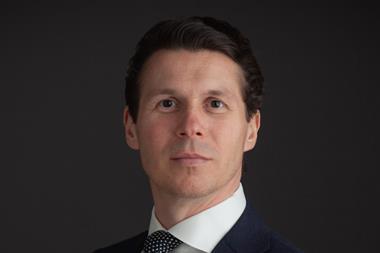Colin Goddard explains the difficulties insurers face when assessing the risk of World Cup players
The World Cup in Germany will bring together some of the greatest football players from all over the world to excite their travelling supporters and millions watching back home. National pride will be at fever pitch. But behind the scenes, the country versus club debate continues to rumble with the insurance of the players as one of the main sources of contention.
Wayne Rooney's metatarsal fracture, which has left England's World Cup plans in disarray, highlights one of the important dilemmas. As he works hard to recover from the injury and get on the plane to Germany, serious questions about his insurance cover will need to be resolved between Manchester United and the Football Association (FA).
“Rooney is probably one of the major assets on the Manchester United balance sheet. Having paid £27m for the 20-year-old less than two years ago they would expect his value to continue to soar,” says Roland Fox, underwriting partner at MAP, a specialist in football player insurance.
Fox adds: “There will need to be some detailed discussion between the two sets of doctors over his fitness before he is released to the England squad. It is unlikely his club will be prepared to risk a reoccurrence of his metatarsal injury while playing for England in the World Cup, with the possibility of losing his services for a part of the following league season. Furthermore, no underwriter is likely to insure the metatarsal in Rooney's right foot during the World Cup. Any other injury claim that could have resulted from a weakened metatarsal will also be rigorously examined.”
Although the FA has its own insurance cover for the national squad, similar cover may not be universal among all the teams playing in this year's World Cup. For some of the poorer African and South American football federations, insuring their football superstars who play for clubs in Spain's La Liga, Italy's Serie A or the UK Premiership may not be financially possible.
The sheer cost of insuring star players such as Brazil's Ronaldinho, Eto'o from Cameroon, and Ivory Coast's Drogba may well be beyond their means. The clubs are unlikely to put such valuable talent at risk and may well be footing the bill for their insurance cover while on international duty.
But the debate about who pays the bill for insurance may well change following the result of a pending lawsuit. In Belgium, Royal Sporting Charleroi is suing FIFA, football's ruling body.
Last season FIFA instructed Charleroi to release a player, Abdelmajid Oulmers, to play for Morocco against Burkina Faso. He was injured during the match, was out for seven months, and the club missed out on the Champions League.
Charleroi has the support of G14, the group of 18 leading European football clubs.
G14's motive in the Oulmers case is innocent enough: it wants national federations to indemnify clubs if expensive players get injured while playing for their country.
The fear is that this is a prelude to a breakaway, whereby the clubs will cut themselves adrift from their own national bodies. Uefa has threatened the clubs with expulsion from its domestic leagues if that happens.
While the club versus country debate continues to rumble on, the implications of a court ruling on another Belgium-based footballer continues to have far-reaching financial implications.
Bosman ruling
When Jean-Marc Bosman won the right in the European Court of Justice in 1995 to move from Belgian club Liège to Dunkirk in France at the end of his contract the implications for the remainder of the European clubs was immense.
In the past 10 years there has been a 600% increase in player's wages. This is largely as result of the Bosman ruling. Michael Ballack's recent move from Bayern Munich to Chelsea for a reported salary of £130,000 a week is a case in point.
Developments in the way footballers move under the Bosman ruling have also prompted changes in insurance provision. As a free agent, and on a weekly salary, the club may well expect him to arrange his own insurance cover considering how much they are paying him if he is not on a guaranteed contract.
And players in their thirties coming to the end of their careers, who have built up a sizeable nest egg, will probably feel that insurance is now no longer as necessary as when they were embarking on their careers.
Senior players will also be heartened by the improved recovery rate that footballers now enjoy. When Paul Gascoigne was stretchered off the Wembley turf in the 1991 FA Cup Final against Nottingham Forest with a cruciate ligament injury he was out of football for a year.
But Manchester United's Gabriel Heinze expects to play for Argentina in the 2006 World Cup after recovering this year from the same injury in half that time.
Less protection
In spite of this, due to the soaring salaries of players, such injuries, if insured, are extremely costly to the insurance market, and the frequency of injury is no less than 15 years ago. Indeed it has been suggested that the lighter boots that players wear may offer less protection to the type of injury that has been seen by David Beckham, Gary Neville and now Wayne Rooney, among others, sidelined for long periods.
The same improvement in recovery times is evident in many other injuries. With improved pitches, better fitness levels and diet, football injuries are much less of an insurance risk than they were 10 or 15 years ago.
There are still policies that pay out if a player cannot play any more due to injury, which is based on the league the player is playing in. The Spurs defender Dean Richards, aged 31, was awarded £2m in 2005 in the single biggest claim in Premiership history after a head injury forced him to retire from professional football.
Insurance is also available for companies wishing to cover themselves against an unlikely outcome in the World Cup. Since the 2002 tournament in Japan and South Korea, where it was reported that a leading South Korean white label goods manufacturer recorded heavy losses on a promotion paying out if the national team reached the quarter finals (South Korea lost 5-3 to Spain after extra time), prize indemnity cover has received greater interest.
But Danny Burns, contingency underwriter at Talbot Underwriting, has seen the capacity at Lloyd's for contingency insurance for football promotions drop dramatically since the last World Cup.
“Capacity in the market to cover a company against a team reaching a predetermined stage of the competition has dropped to 20% of what it was four years ago,” he says.
The beautiful game is renowned for its intrigue, skill and flamboyance on the field. But the providers of insurance around the world may well have a different perspective as this football fiesta unfolds to the watching millions. IT
‘ Colin Goddard is a sports insurance specialist at Alexander Forbes Risk Services
Hosted by comedian and actor Tom Allen, 34 Gold, 23 Silver and 22 Bronze awards were handed out across an amazing 34 categories recognising brilliance and innovation right across the breadth of UK general insurance.













































